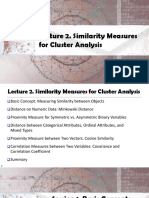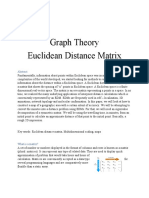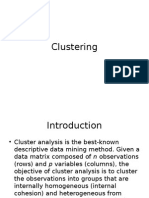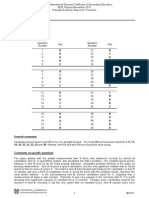0% found this document useful (0 votes)
14 views27 pagesStat 5311 - Multivariate Statistics and Nonparametric Statistics
The document outlines a course on Multivariate Statistics and Nonparametric Statistics, focusing on Multidimensional Scaling (MDS) as a method for spatial representation of data based on proximities. It discusses Classical (Metric) MDS, including the derivation of low-dimensional representations from high-dimensional data and the evaluation of representation adequacy. Examples of Euclidean and non-Euclidean distances are provided, demonstrating the application of MDS in real-world scenarios.
Uploaded by
joaobbdd2020Copyright
© © All Rights Reserved
We take content rights seriously. If you suspect this is your content, claim it here.
Available Formats
Download as PDF, TXT or read online on Scribd
0% found this document useful (0 votes)
14 views27 pagesStat 5311 - Multivariate Statistics and Nonparametric Statistics
The document outlines a course on Multivariate Statistics and Nonparametric Statistics, focusing on Multidimensional Scaling (MDS) as a method for spatial representation of data based on proximities. It discusses Classical (Metric) MDS, including the derivation of low-dimensional representations from high-dimensional data and the evaluation of representation adequacy. Examples of Euclidean and non-Euclidean distances are provided, demonstrating the application of MDS in real-world scenarios.
Uploaded by
joaobbdd2020Copyright
© © All Rights Reserved
We take content rights seriously. If you suspect this is your content, claim it here.
Available Formats
Download as PDF, TXT or read online on Scribd
/ 27





















































































